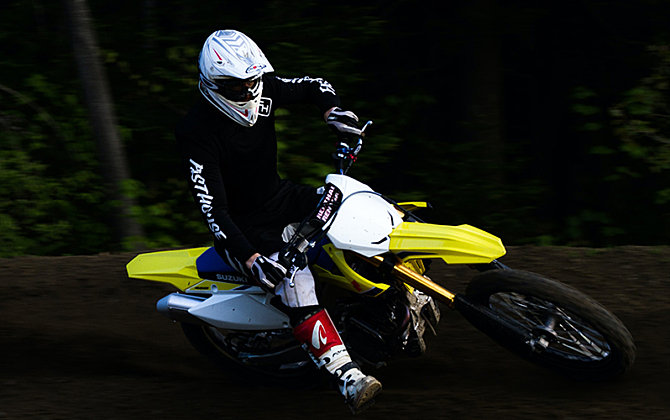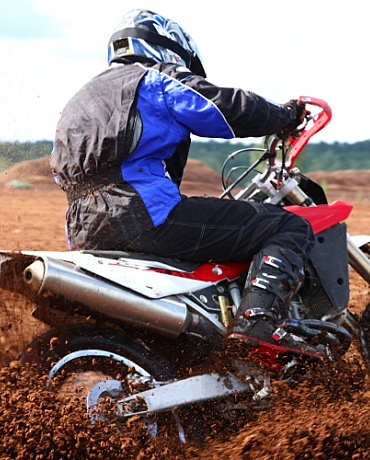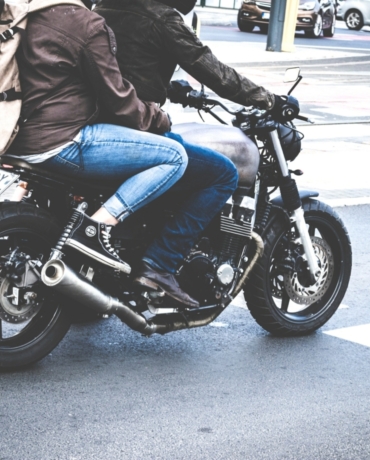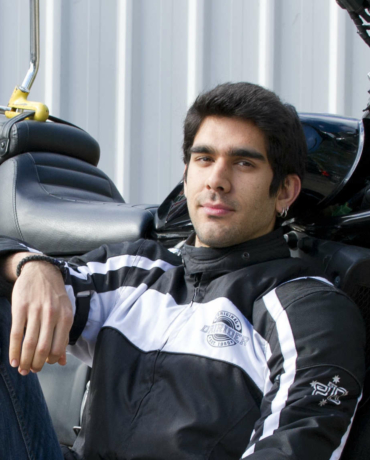Motorcycle safety
As motorcycles and scooters become increasingly popular forms of transport, our goal is to find ways to ensure that motorcycle riders are kept safe on our roads.
As motorcycles and scooters become increasingly popular forms of transport, our goal is to find ways to ensure that motorcycle riders are kept safe on our roads.

NeuRA recently conducted a three year in-depth investigation of motorcycle crashes. At the same time, we developed a number of research streams addressing injury and crash prevention. For injury prevention, we have been examining the performance of protective equipment and studying the mechanics of pelvic injury.
In terms of protective clothing, we are examining the barriers to the usage. Heat discomfort is the number one reported reason why riders do not wear protective clothing. To better understand this factor, we are collaborating with researchers at the University of Wollongong, Monash University Accident Research Centre (MUARC) and RMIT.
For crash avoidance, we have partnered with MUARC, Centre for Automotive Safety Research and UniFI, Italy to examine the potential of advanced braking systems for motorcycles.
The motorcycle riding community in New South Wales plays a significant role in much of our research. By talking to over 500 riders across the state, NeuRA has begun to build an in-depth profile of the riding population. This will help set priorities for developing strategies to reduce the number of riders injured on our roads. We are also continuing to conduct focus groups to ensure we gain a good understanding of what riders require. If you have any interest in participating in our studies, please contact our research team below.
After mapping out profiles of motorcycle riders in different age groups in NSW, for the first time, we can gain an understanding of key risk factors for each. This includes the frequency of riding in different conditions and the different purposes for riding such as commuting vs leisure.
The data we have collected is an invaluable resource for developing strategies and programs to enhance the safety for riders of different ages. We have been able to demonstrate the high use of some protective equipment among NSW motorcyclists: helmets (100 per cent), protective jackets (82 per cent) and protective gloves (73 per cent). At the same time, there is room for increased use of protective pants (56 per cent) and footwear (57 per cent).
In terms of the actual performance of protective clothing, our research has confirmed different aspects that provide protection as well as showing the need for improvement. Better communicating to riders the variation in the quality of protective clothing is an example of an identified need highlighted by our research.
For abrasion resistance, we have validated European quality assessment methods and developed a method for estimating the probability of abrasion injury. This information is useful to those developing consumer information programs. We are currently conducting similar work examining the performance of impact protectors and body armour, as well as the best ways to measure their performance.
We have also identified the potential for thermal strain in some forms of protective clothing in hot summer conditions. We are currently examining the impact this might have on rider performance and fatigue.
Our crash studies have confirmed the frequency with which the motorcycle fuel tank is a source of groin and pelvic injury. This demonstrated that there has been little improvement in the crashworthiness over the last few decades.
Every dollar of community support enables our scientists to continue making life-changing discoveries that contribute to a brighter and healthier future.
Run, swim or bake your way to making a positive difference in the lives of people touched by brain and nervous system disorders.
Stay informed about our latest research breakthroughs, scientific discoveries and the incredible minds behind them – subscribe today.
Neuroscience Research Australia respectfully acknowledges the Bidjigal and Gadigal peoples of the Eora Nation as the Traditional Owners of the Land on which we stand and pay our respects to Elders past and present.
Redevelopment of the NeuRA website has been made possible by the generous support of Conexus Financial.




